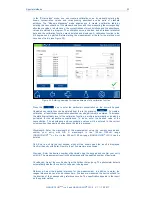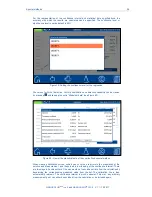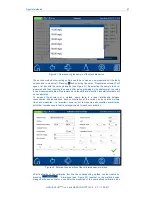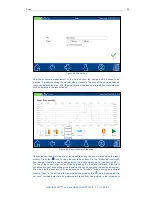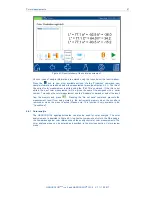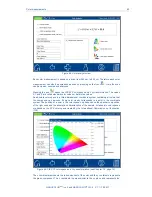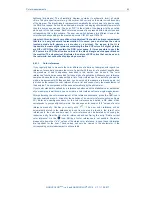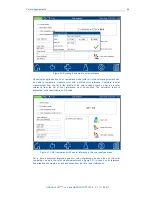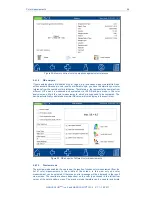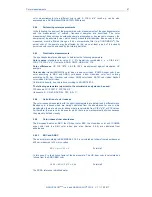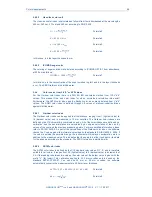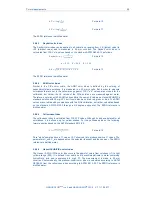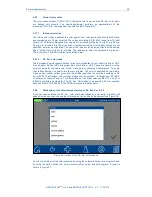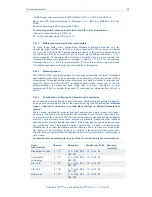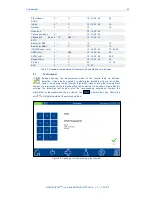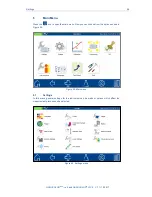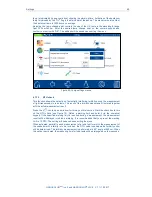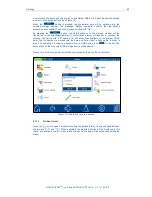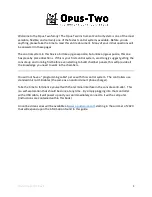
Color measurements
47
NANOCOLOR
®
UV
/
VIS
II and
NANOCOLOR
®
VIS
II V 1.1 / 10.2017
color measutrements into a different color scale. A CIE L+a*b* result e.g. can be also
expressed as a APHA/Hazen/PtCo ASTM D 5386 result.
5.6.2
Performing color measurements
In the following, the basics of the programmed color measurements of the spectrophotometer
and the measurement of colored, translucent samples are described. The color
measurement does not require extensive sample preparation or any reagents. However, the
sample must be absolutely clear, which usually means that all samples, whose color is to be
measured, must be filtered through a 0.45
m membrane filter (e.g. CHROMAFIL
®
). The
actual color of the sample may be affected by this, since at least a part of the visually
perceived color could be caused by the turbidity particles.
5.6.3
Practicable measurements
The spectrophotometer enables you to determine the following parameters:
Color spaces:
standard color value X, Y, Z; chromaticity coordinates x, y, z;
CIE-L
*
a
*
b
*
;
CIE-L
*
Ch; CIE-L*u*v*; Hunter-Lab; RGB; CMYK; HSB; HSL; YUV
Color differences:
E CIE 1976,
E CIE 1994, measurement against standards,
E
analysis
Color scales:
Hazen/APHA/PtCo color index, iodine color index, ICUMSA sugar color, beer
color according to EBC and ASBC, yellowness index, Hess-Ives color unit, coloring
according to Ph. Eur., Gardner color index, ADMI color index, ASTM color index, Saybolt
color index, Klett color index,
Colorimetric density, true coloration according to EN ISO 7887-3.
The following paramaters important to the colorimetric analysis can be used:
CIE observer: CIE 1931 2°, CIE 1964 10°
Illuminants: A, C, D65, D50, D55, D75, E, FL11
5.6.4
Calculation of color indexes
The color indexes measurable with the spectrophotometers are determined in different ways.
Besides color indexes which are simply calculated from the absorbance for one or more
wavelengths, there are also color indexes that are calculated from CIE-L*a*b* or XYZ values.
Furthermore, there are color indexes for which there is no mathematical definition because
they are only defined visually.
5.6.5
Color indexes from absorbance
The European beer color EBC, the US beer color EBC, the Hess-Ives color unit, ICUMSA
sugar color and the Klett color index (see also Section 5.6.9) are calculated from
absorbance.
5.6.5.1
EBC and ASBC
The beer color according to EBC MEBAK 2.16.2 is calculated as folllows from absorbance at
430 nm, measured in 10 mm cuvettes:
𝐸𝐵𝐶 = 𝐸
430
× 25 × 𝐹
Formula 1
In this case, F is the dilution factor of the beer sample. The US beer color is calculated as
follows from the ASBC EBC color:
𝐴𝑆𝐵𝐶 = 𝐸𝐵𝐶 × 0,375 + 0,46
Formula 2
The ZERO reference is distilled water.
Summary of Contents for NANOCOLOR UV/VIS II
Page 1: ......

